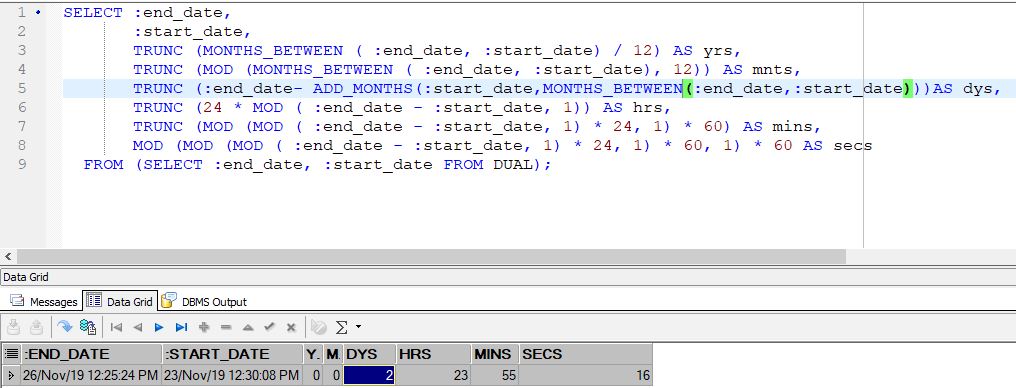A day consists of twenty-four hours, but an analog clock consists of twelve hours. Came into use to designate morning hours and the term p.m. Both terms are abbreviations of Latin phrases, a.m. Is short for ante meridiem or before midday, and p.m.
Is short for post meridiem or after midday. Are properly written in lowercase with periods. Was in use as early as the 1640s, but the term a.m. Was not in use until the 1760s, though timekeeping in twelve-hour increments became standard in Europe a century earlier. Today, twelve-hour clocks are still the norm and twenty-four hour clocks are mostly used for scientific and military reasons.
The meaning of AM and PM is the simple abbreviation of Latin phrases. In particular, AM stands for ante meridiem, which translates into English as 'before midday'. Meanwhile, PM is post meridiem and means in English 'after midday'. These abbreviations are used to identify the time in the 12-hour clock format instead of using 24 hours.
Considering that day has 2 cycles, AM and PM denote whether it is before or after the middle of a day. 12 noon can be neither 12 am nor 12 pm . Since we do not notate time backwards, 12 midnight is not 12 am, since it would then require 1 am to become 11 am and so on. Similarly since it is the fleeting instant that marks both the end of one day and the beginning of the next ,it is not 12 pm.
In reality midnight has no sooner been reached than it has been passed. The phrase "the stroke of midnight" is apt. As has been demonstrated by many of the previous answers, and because it is incorrect, the use of 12 am and 12 pm is inherently confusing. To avoid this confusion it should be ended.
The use of noon and midnight informally or 12 noon and 12 midnight or 1200 and 2400 should become practice. 12am and 12pm are both incorrect. You should really pay attention to the abbreviation.
"a.m." means "ante meridiem" which means "before midday" and p.m. Means "post meridiem", which means "after midday". Consequently to use am/pm to refer to midday, is simply wrong . The correct terms are 12 noon and 12 midnight, with times in between using am/pm.
Means for "post meridiem", which are Latin phrases meaning before midday, and after midday. Therefore, you use the abbreviation A.M. After a time to refer to any time before noon but after midnight (i.e., the morning).
Is used to refer to any time after noon until midnight (i.e., the afternoon, evening, and night). They are used to differentiate the time in day and night in the 12-hour time zone. They divide the 24 hours of a day into two time zones lasting 12 hours each. The first 12-hour duration runs from midnight to noon and is designated by am. The second 12-hour duration runs from noon to midnight and designated by pm.
So, the numbers from 1 to 12 followed by am or pm are used to identify all 24 hours of the 12-hour clock system. Another confusing notion about the use of AM and PM is to understand how to properly write it. Different style guides suggest different types of writing the abbreviation.
For instance, there could uppercase AM/PM or lowercase am/pm. Also, the use of the period between the letters (A.M./P.M.) might be acceptable. Nevertheless, the most common rule in formal writing is to use uppercase AM/PM1. The lack of consistent rules among all style guides is the primary factor why people could face the issue of how to write the time appropriately. The 12-hour clock method defines all 24 hours of the day using the numbers 1 to 12, followed by am or pm. 5 AM is early in the morning and 5 PM is late in the afternoon; 1 AM is one hour after midnight, and 11 PM is one hour before midnight.
Ante meridiem is generally referred to as AM, am, a.m., or A.M whereas PM, pm, p.m., or P.M. Are typically abbreviated post meridiem. AM and PM are Latin words that are used to reference time. AM and PM are the abbreviated terms for Ante meridiem and Post meridiem which means before noon or midday and afternoon or midday respectively. The initial 12-hour period which lasts from midnight to noon is designated with AM while the next 12-hour period which lasts from noon to midnight is designated with PM.
Use lowercase letters with periods for ante and post meridian (a.m., p.m.). The first and most common way to write them is with lowercase "a.m." and "p.m." This way requires periods, and both Chicago Style and AP Style recommend this way of writing the abbreviations. Home » AP Style » AP Style a.m., p.m. AP Style time of day holds that the time descriptors "ante meridiem" and "post meridiem" should be abbreviated with lowercase letters and with periods (a.m. and p.m.).
A variety of different styles may be acceptable for formal invitations. The following style should be used in text for print and electronic communications. Use numbers for times, except for noon and midnight, use a colon to separate hours and minutes and do not use ciphers with whole hours. Most other languages lack formal abbreviations for "before noon" and "after noon", and their users use the 12-hour clock only orally and informally. However, in many languages, such as Russian and Hebrew, informal designations are used, such as "9 in the morning" or "3 in the night".
One must recognise the difference between points in time and periods of time. Midnight is the zero point in time when we start to build up 24 one-hour periods of time to make up a new day. After a period of one hour we reach the point in time called 1am, and after 12 periods of one hour we reach the point called noon. At noon the 13th one-hour period starts, ending at point 1pm.
This process continues up to the point 11pm when the 24th period of one hour starts. This period ends in the middle of the night, 12 hours after noon at the point midnight or 12pm. However, AM/PM within the 12-hour time format is not effective way to indicate the precise time. There might be confusion regarding the time of a day as well as it can mislead in the date when midnight is not properly indicated. Considering that legal and other formal standards require the use of 24-hour convention, the utilization of AM and PM would remain only as the tradition in informal communication. However, the 12-hour system has its flaws with the ambiguity in the understanding.
It might be difficult for the people who use only a 24-hour clock to memorize when it is AM or PM. This time convention is also might be confusing for the writing because it has multiple rules regarding how to write these abbreviations. From the Latin words meridies , ante and post , the term ante meridiem (a.m.) means before midday and post meridiem (p.m.) means after midday.
The American Heritage Dictionary of the English Language states "By convention, 12 AM denotes midnight and 12 PM denotes noon. When emphasizing an exact or precise time, the abbreviations "a.m." and "p.m." are used. These two abbreviations stand for the Latin terms "ante meridiem" and "post meridiem," which literally mean before noon and after noon. The American Heritage Dictionary of the English Language states "By convention, 12 AM denotes midnight and 12 PM denotes noon. Clearly indicate which part of the day is being referred to, expressions of time like in the morning, this afternoon, and tonight are unnecessary with these time abbreviations.
Although such expressions are common in speech, avoid using them with a.m./p.m. Sometimes, payment is denied because they need to update information about your insurance plan, so you can answer their questions over the phone and take care of the balance in just a couple minutes. Learning more about your policy and how your insurance will process a similar claim could make a big difference in the long run. Nor in this case a rule can be laid down as to the number of instances to the contrary which would suffice to rebut the initial presumption raised by the entry of custom in the Riwaj-i-am. As to whether from a given piece of evidence rebuttal of the custom recorded in the Riwaj-i-am can be inferred is always a question of fact which would obviously be decided after taking into consideration all the facts of the case.
Again, it has been held in Mohammad v. Mst. But the onus is not equally heavy in all cases. If the custom embodied in the Riwaj-i-am is opposed to the general custom of the Province, the presumption in favour of the Riwaj-i-am is weak and can be easily rebutted. The sum and substance of all the rulings cited above is that as laid down by their Lordships of the Privy Council in Beg v. Allah Ditta [45 P.R.
1917 P.C.], an entry in the Riwaj-i-am raises a presumption in favour of the custom recorded therein, and the onus lies upon the party challenging its correctness to rebut that presumption. If certain portions of a Riwaj-i-am are shown to be compiled defectively it does not necessarily follow that other portions of the Riwaj-i-am are also unreliable and should not be followed. An entry in the riwaj-i-am, though unsupported by instances, imposes the burden of proving that it was an incorrect statement of the custom on the party who challenges it. To the same effect are at he observations of Tek Chand J, in Mst. In Mohammad Khalil v. Mohammad Baksh it was held that Riwaj-i-am not carefully compiled and evidence showing what custom should be and not what it is, has no evidentiary value. Riwaj-i-am of Jalandhar District was held not reliable.
AM stands for ante meridiem, which means "before midday" and denotes midnight, while PM is post meridiem and means in English, denoting noon. PM is post meridiem and means in English "after midday" denoting noon, while AM stands for ante meridiem and denotes midnight. The coordination of military actions requires the precise and unambiguous comprehension of time. Since the solar day is the primary measure of time, the military establishments utilize 24-hour clock format and do not separate hours minutes.
For instance, instead of Noon or 12 PM , military time denotes 1200 which should be pronounced as twelve hundred. The same pronunciation is also used to indicate time in radio communication. This format is the most exact way to refer to time and use it for navigation and scheduling. For the people who just encountered the 12-hour convention, it might be difficult to memorize to what part of the day AM and PM refer to. However, there is a simple solution that does not even require to know the actual translation of the abbreviations (ante/post meridiem).
The 12-hour system divides the 24 hours of a day into two periods lasting 12 hours each. The first 12-hour period is designated as am. The second period, marked pm, covers the 12 hours from noon to midnight. The daily cycle starts at 12 midnight, runs through 12 noon, and continues until just before midnight at the end of the day. There is no widely accepted convention for how midday and midnight should be represented.
The 12-hour clock was developed from the second millennium BC and reached its modern form in the 16th century AD. Occasionally computer programs encourage you to write "AM" and "PM" without a space before them, ... Either way, there should be a space between the time and the "a.m." or "p.m." that follows. Although small capitals used to be the preferred style, it's now more common to see lowercase letters followed by periods ("a.m." and "p.m.") . While writing time of day, don't mix styles within a single context. Stay consistent in usage with relation to a.m./p.m., numerals, and hours and minutes.
Which Is Correct AM Or IM The abbreviation a.m., which comes from the Latin ante meridiem , designates the first 12-hour period of the day. The second half of the day takes the abbreviation p.m., from post meridiem . Below are a few other abbreviations that are common in English.
Remember that abbreviations are not always completely standardized. One style guide may advise you to abbreviate Thursday as Thurs. While another may argue for Thu. Likewise, some style guides allow you to omit the periods with these abbreviations, but it's never wrong to include periods. So if you aren't sure whether to use the periods, err on the side of leaving them in.
WHEN I was in the RAF 50 years ago, this problem was solved by defining it out of existence. Working on the 24-hour clock meant that there was no difficulty with midday1200 hours - but the Air Force could not countenance 0000 hours for midnight. We were instructed that the Air Force day began at 0001 hours and ended at 2359 hours. The two minutes between were ours to use as we liked. Using numbers from 1 to 12, followed by am or pm, the 12-hour clock system identifies all 24 hours of the day.
For example, 5 am is early in the morning, and 5 pm is late in the afternoon; 1 am is one hour after midnight, while 11 pm is one hour before midnight. Moreover, in situations where the relevant hour is obvious or has been recently mentioned, a speaker might omit the hour and just say "quarter to ", "half past" or "ten 'til" to avoid an elaborate sentence in informal conversations. These forms are often commonly used in television and radio broadcasts that cover multiple time zones at one-hour intervals.
The 12-hour clock can be traced back as far as Mesopotamia and ancient Egypt. Both an Egyptian sundial for daytime use and an Egyptian water clock for night-time use were found in the tomb of Pharaoh Amenhotep I. Dating to c. 1500 BC, these clocks divided their respective times of use into 12 hours each. End a sentence, as in The train is arriving at 10 p.m., it is not necessary to place an additional period at the end. And, for our final writing tip, since these abbreviations specify an hour's relation to noon, it is not necessary to use morning, evening, night, or o'clock with them. When the exact time is not important, and in informal contexts, such as in everyday speech, the abbreviations a.m.































